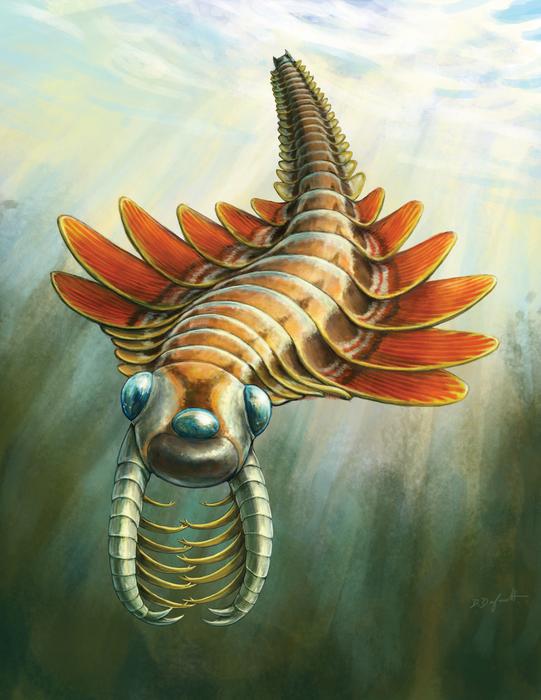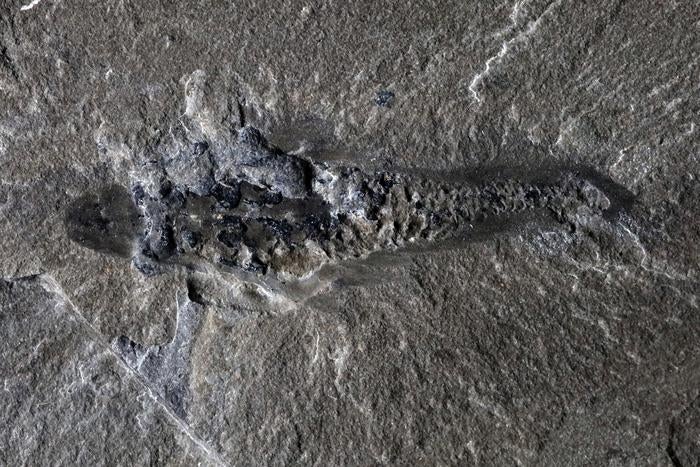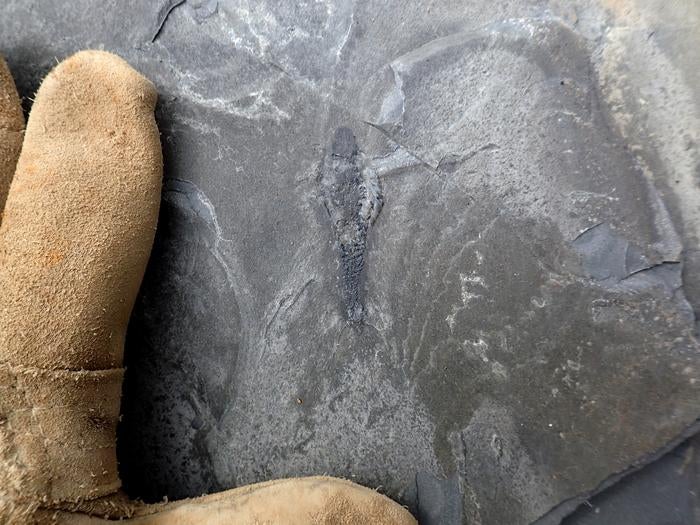ARTICLE AD BOX
Scientists examining a rare fossil found in Canada’s Burgess Shale have discovered a predator with three eyes that lived over 500 million years ago.
The fossil species, named Mosura fentoni for resembling the fictional Japanese kaiju Mothra, was about the size of an index finger with three eyes, spiny jointed claws, a circular mouth lined with teeth, and a body with swimming flaps along its sides, researchers from the Royal Ontario Museum said.
Mosura fentoni, also dubbed “sea moth” due to its broad swimming flaps and narrow abdomen, was a member of an extinct group of animals called radiodonts, which included the meter-long marine predator Anomalocaris canadensis.
It was, researchers said, “unlike any living animal”.

Mosura had a unique abdomen-like body region with multiple segments at its back end, according to a new study published in the journal Royal Society Open Science.
“This is a neat example of evolutionary convergence with modern groups like horseshoe crabs, woodlice, and insects, which share a batch of segments bearing respiratory organs at the rear of the body," study co-author Joe Moysiuk said.
Scientists said it was not clear why Mosura had this unique body adaptation but suspected it could be related to a particular habitat preference requiring more efficient respiration.

It was distantly related to modern moths and belonged to a deeper branch of arthropods including spiders, crabs and millipedes.
"Radiodonts were the first group of arthropods to branch out in the evolutionary tree, so they provide key insight into ancestral traits for the entire group,” Jean-Bernard Caron, another author of the study, said.
“The new species emphasises these early arthropods were already surprisingly diverse and were adapting in a comparable way to their distant modern relatives.”

Mosura did not have arteries and veins, but an "open" circulatory system that involved the heart pumping blood into large internal body cavities called lacunae. "The well-preserved lacunae of the circulatory system in Mosura help us to interpret similar, but less clear features that we've seen before in other fossils,” Dr Moysiuk said.
The Burgess Shale fossil grounds in Canada’s Yoho and Kootenay National Parks are recognised as Unesco World Heritage Sites. “Very few fossil sites in the world offer this level of insight into soft internal anatomy. We can see traces representing bundles of nerves in the eyes that would have been involved in image processing, just like in living arthropods,” Dr Caron said, adding that the “details are astounding”.



.jpg?trim=0,0,0,0&width=1200&height=800&crop=1200:800)





 English (US) ·
English (US) ·